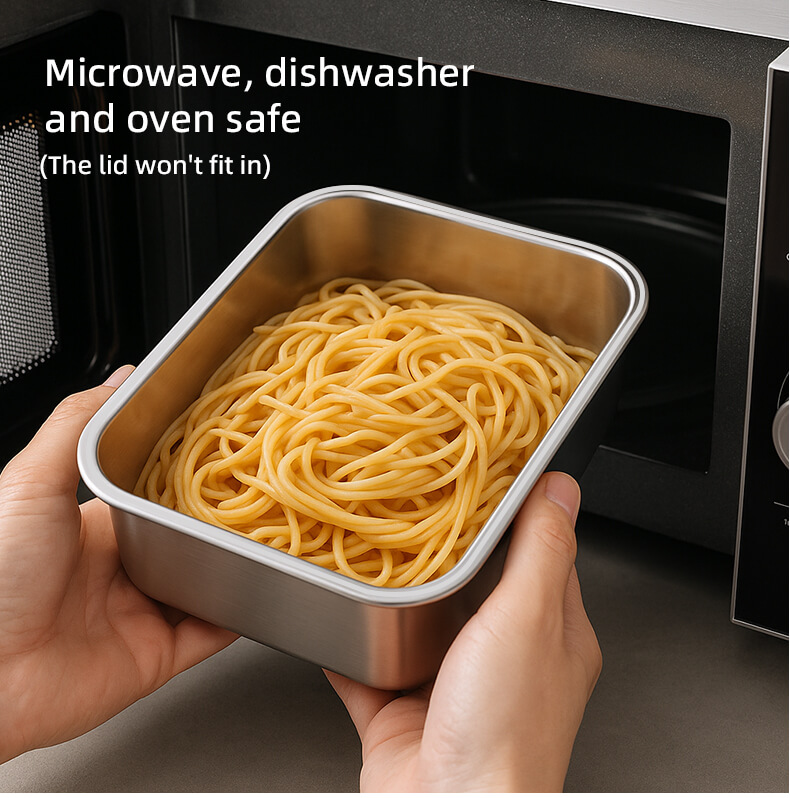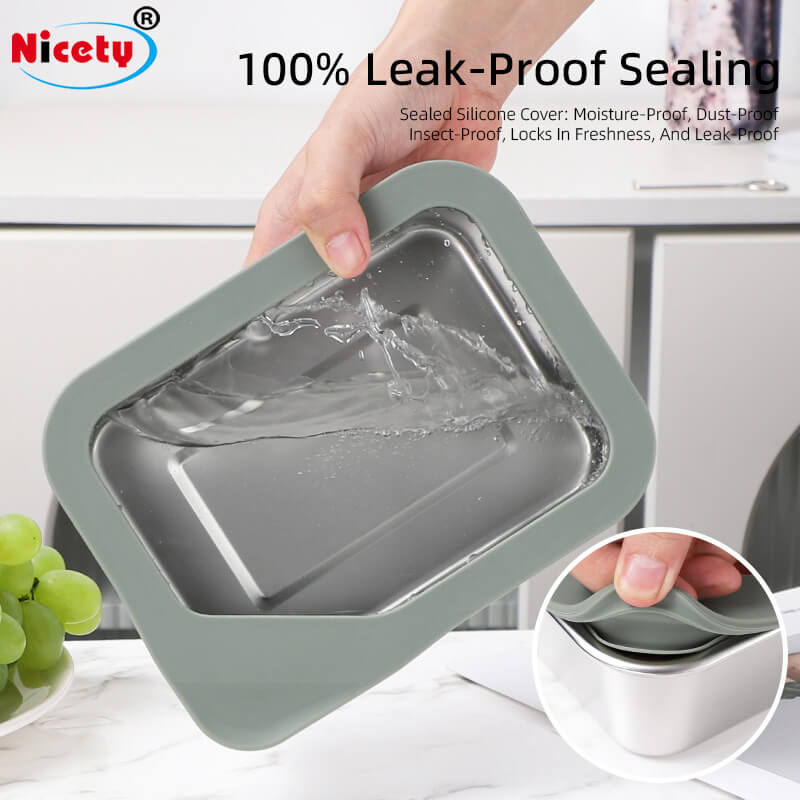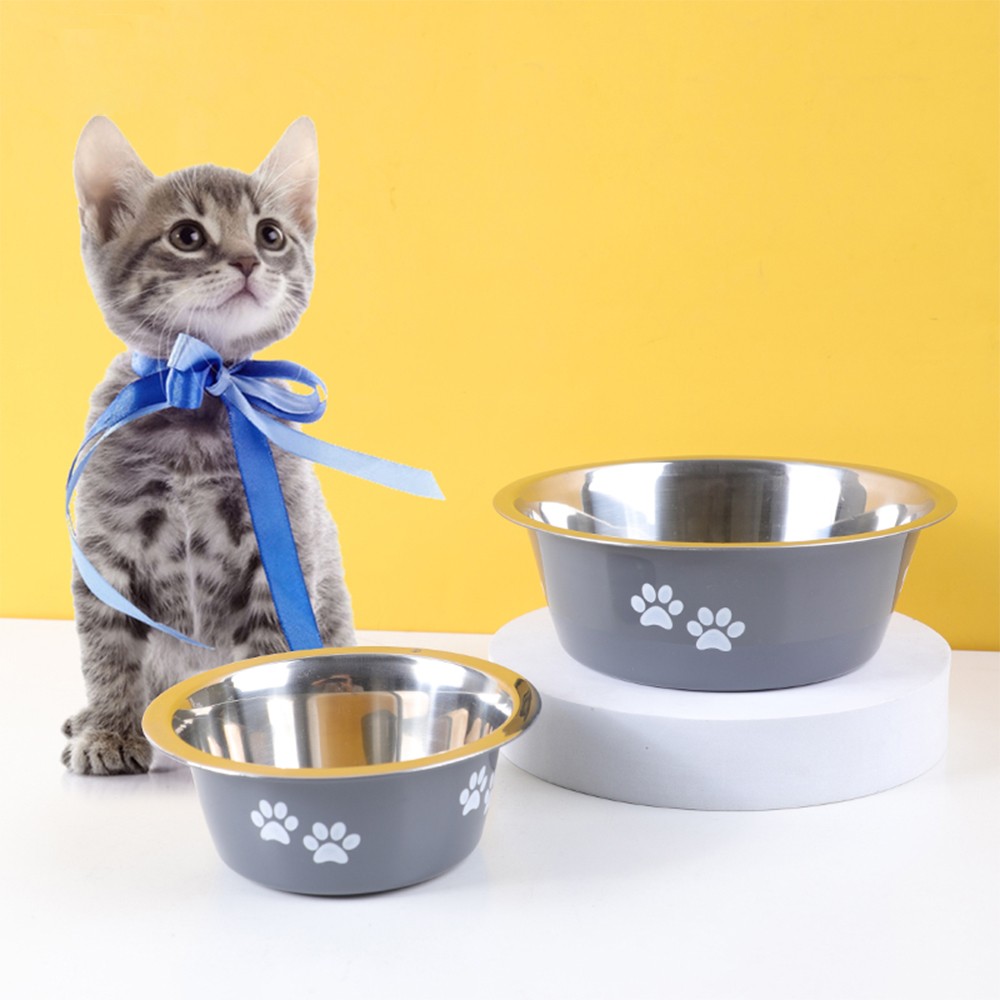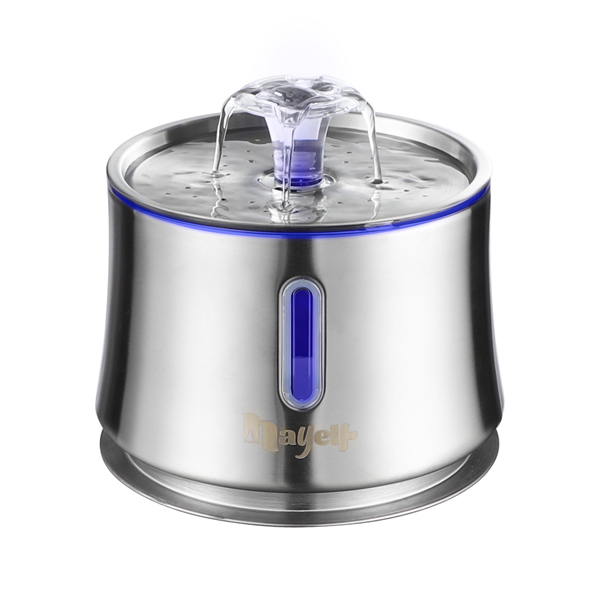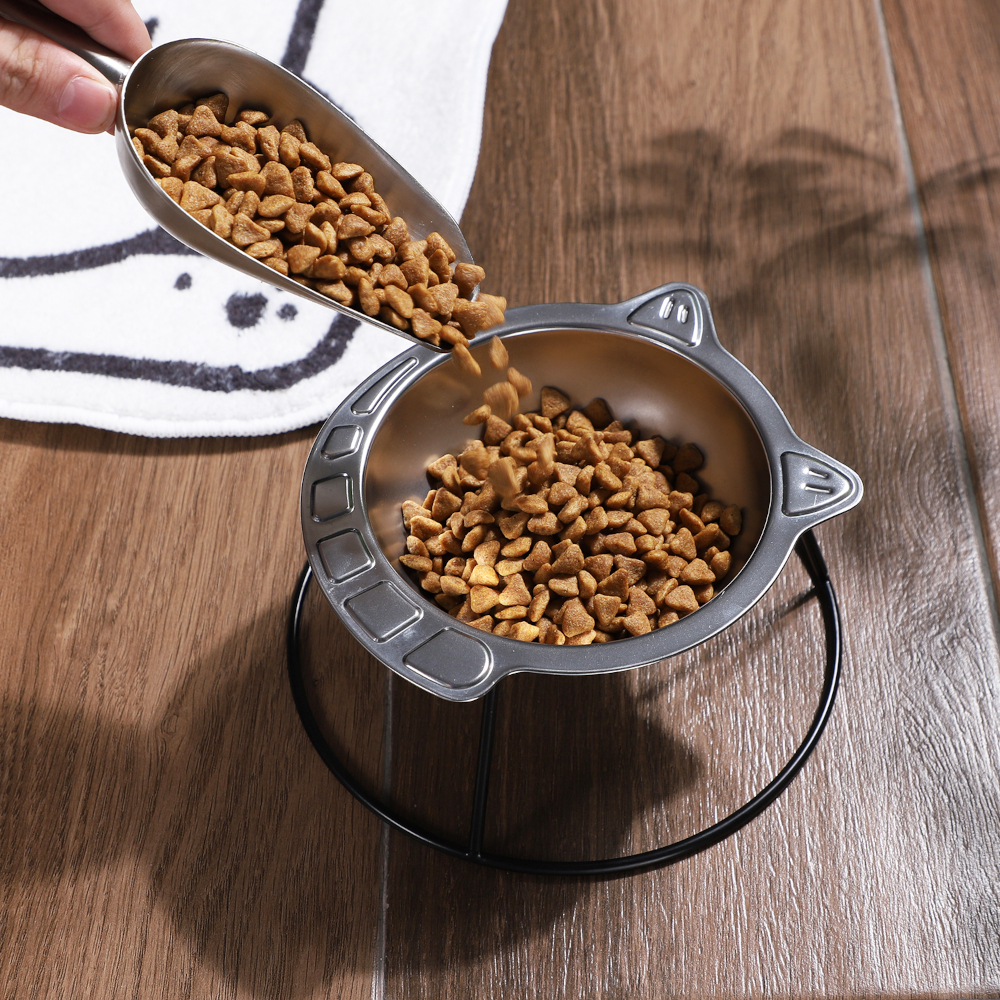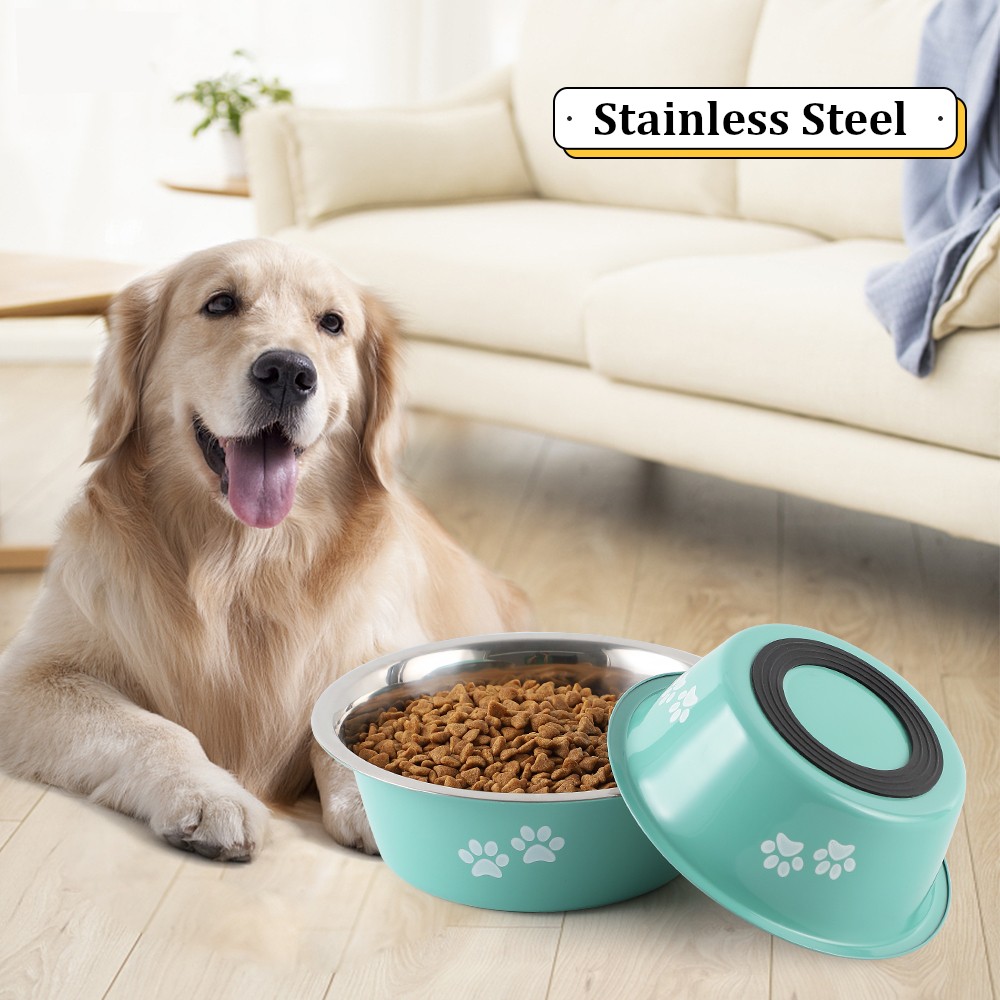A selection of lunch boxes is offered as an alternative to bringing food to work. For some people A selection of lunch boxes is offered as an alternative to bringing food to work. Some people prefer to buy their meals at the grocery store, but others prefer to bring their own lunch.
Many people are concerned about what are lunch boxes made out of. Some consumers choose to buy lunch boxes made of natural materials such as cardboard or recyclable materials. Others may prefer to buy lunch boxes made of recyclable materials such as bamboo or plastic. Furthermore, the type of lunch box selected will be based on personal tastes and needs. This post will go through what lunch boxes are made of and which are appropriate for one’s needs.
What Is Lunch Box
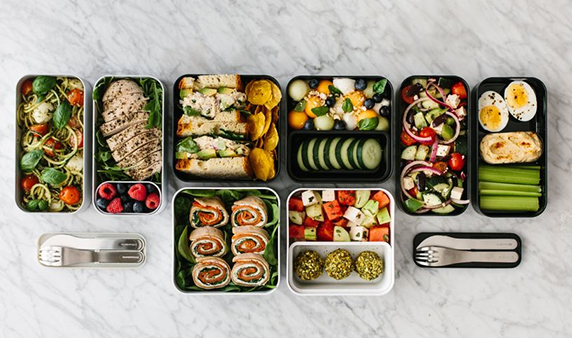
Lunch is a special meal that frequently necessitates the use of a container. Inspired by Indian tiffin boxes, Japanese bento boxes from Japan and around Asia, and classic miners’ and steelworkers’ pails. A lunchbox is a container that holds food and liquids for the midday meal.
The lunchbox has several food compartments. It is typically made of metal, plastic, or cardboard.
Selecting the appropriate lunchbox is of the utmost importance. This is because it can have an effect on both our health and the environment. Here is a straightforward strategy for selecting the right lunch container materials that are risk-free.
What Materials Are Lunch Boxes Made Of
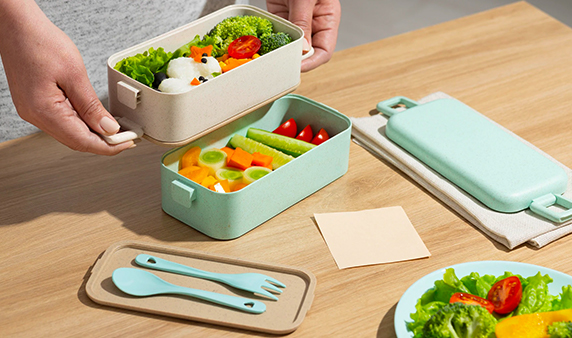
With so many lunch boxes on the market, deciding which one to buy is virtually impossible. Before replacing an old lunch box, it is a good idea to look into the materials used to make lunch boxes.
As a result, let us explore the various factors to consider when selecting a lunch box to identify which one best suits one’s needs.
Stainless steel
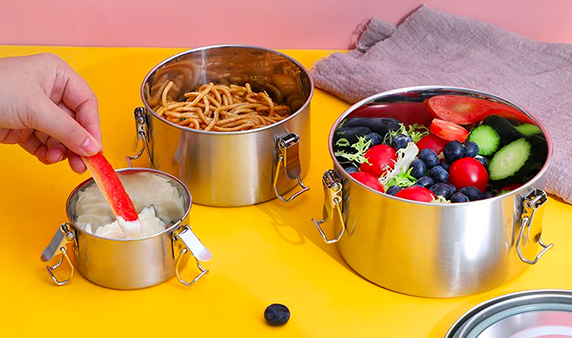
Comparing stainless steel to any other material for any product, stainless steel is nearly always found that stainless steel is superior for lunch boxes. Finding a superior material that does not crack, corrode, or harm the surrounding environment is challenging. (Learn More: Stainless Steel Vs Titanium Vs Aluminum)
It’s not hard to understand why stainless steel has been the material of choice for lunch box manufacturers for so many years. It does not harm the environment because it can be recycled. In addition, Forbes claims that Sweden is already well on its way to producing stainless steel without the need for any fossil fuels.
According to the reports, the utilization of alternative production technology will significantly reduce the sector’s overall carbon footprint. Because of its superior durability, stainless steel is the material of choice for purchasers.
Because it is resistant to oxidation, it does not corrode or rust like other metals. I used to have a box made of stainless steel, which could withstand most of my subsequent purchases. The flavor of food is not altered by stainless steel, which is another benefit of using this material. It does not impart a different taste to the water and does not release any toxins into it.
Moreover, what are insulated lunch boxes made of? The type 304 stainless steel is used for most lunchboxes since it is food-grade. It is safe because it does not interact with food ingredients.
Type 304 stainless steel is available in two common grades: 18/8 and 18/10. Chromium and nickel are represented by percentages. Because additional nickel provides more excellent corrosion resistance and a higher gloss, 18/10 is believed to be more oxidation resistant than 18/8.This kind of product can be purchased from a supplier of wholesale stainless steel container.
There is an 18/0 version. However, because of its poor corrosion resistance, it is rarely used for food containers.
Metal
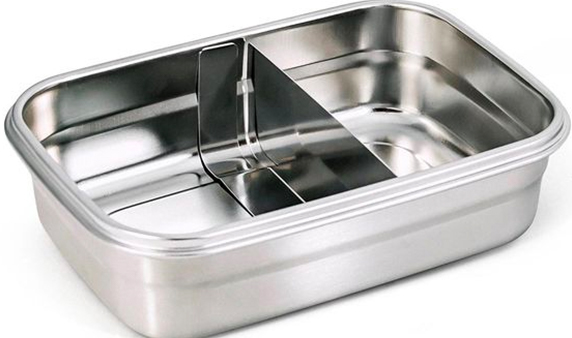
A metal lunchbox is a wonderful way to keep food safe and fresh, it’s a strong and long-lasting material as well. The stainless steel lunch box is one of them. Metal lunch boxes are also easy to clean and dishwasher safe.
Metal lunch boxes come in a wide range of styles and colors. Some are insulated to keep the meal at the proper temperature, while others are not. Lunchboxes with compartments for more accessible food organization are also available.
However, metal containers, on the other hand, should not be microwaved. The microwaves will not pierce the metal, but they will generate an electric current in the bowl, unlikely to cause any harm unless the metal has sharp edges or points. Then “arcing” becomes feasible, and sparks fly.
Aluminum
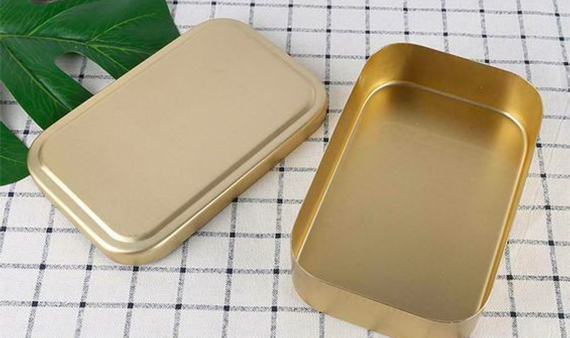
Aluminum has strong corrosion resistance. When it comes to heat conductivity, aluminum outperforms copper. Stainless steel, on the other hand, may be used at higher temperatures than aluminum, which becomes flexible at higher temperatures.
Some lunch boxes are made of aluminum foil to provide an airtight seal and keep food fresh. Because aluminum foil is heat resistant, it can cover food during cooking and storage. However, aluminum is around one-third the weight of stainless steel, and it is more prone to denting if use them to make lunch boxes.
Plastic
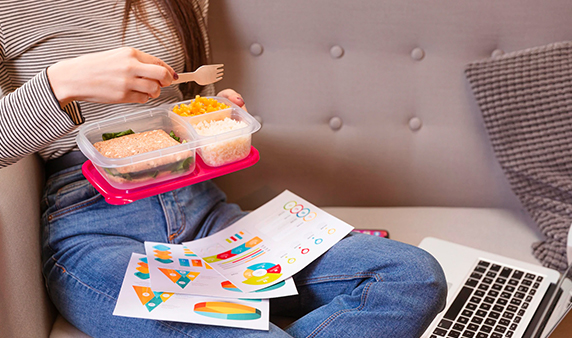
It is not difficult to understand why plastic is the material that is most commonly used for lunch boxes. To begin, it has the lowest price tag for all the materials we have listed.
It is not only more compact but also lighter, which makes it much simpler to transfer food that are used daily. But what are plastic lunch boxes made of?
A widespread misconception holds that polyethylene (PE) polymers are used in producing the vast majority of items designed to maintain their freshness.
In fact, lunchboxes can be fabricated out of PP plastics. First, we need to establish a clear distinction between the two. The definitions of PE and PP polymers are provided in the following sections.
- PE Plastic
PE plastic has excellent cold resistance and can be utilized at -60 degrees Celsius regularly, but what about PP plastic’s cold resistance? Because of its high cleaning requirements, PP plastic is a form of lightweight plastic widely used in the home appliance and automobile industries and for food packaging. Bento lunchboxes constructed of PP plastic can withstand temperatures as low as -35 degrees Celsius. PP plastic products become brittle when the temperature falls below -35 degrees Celsius.
- PP Plastic
PP plastic is an excellent material for heated bento boxes since freezers may reach a maximum temperature of negative 24 degrees Celsius in their most extreme cryogenic state, and the temperature of their fresh-keeping layers ranges from 3-10 degrees Celsius. The fact that polypropylene (PP) plastics are resistant to heat and can be utilized at temperatures as high as 100 degrees Celsius is another vital reason for their application in the preservation of freshness of lunch.
Paper
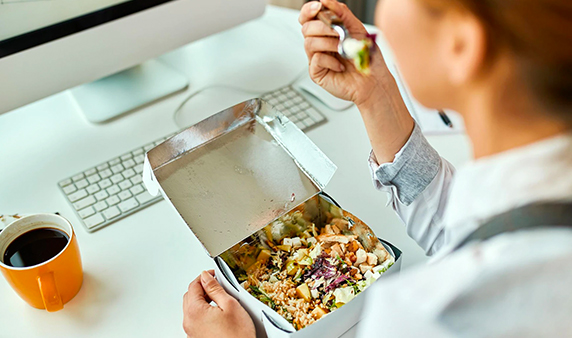
Paper lunchboxes are becoming increasingly popular since they are more environmentally friendly and sustainable than the plastic or metal competitors. Paper lunch boxes are manufactured from recycled paperboard. Furthermore, they are recyclable and may be easily transformed into new paper products after use.
For various reasons, paper lunch boxes outperform plastic or metal lunch boxes. They are made of an environmentally friendly and long-lasting substance. Paper meals are also recyclable, allowing them to be readily recycled into new paper goods after use.
Because they are lightweight and portable, paper lunch boxes are ideal for children and adults. Furthermore, they are available in various colors and styles, allowing consumers to select one that suits their unique taste.
Paper food containers are an excellent choice for individuals looking for an environmentally friendly and sustainable lunchbox. They help to reduce trash because they are constructed of recycled paperboard.
Glass
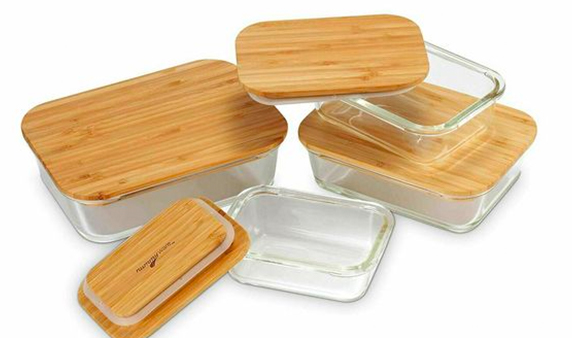
Although glass is demonstrably superior to plastic, glass is significantly less common than plastic or metal. Glass lunchboxes will not rust, corrode, bend, or fade over time like metal ones will.
Glass, in the end, is not a hazardous material. Because it does not contain any naturally occurring toxins, it is suitable for food storage containers. Even better, a glass lunch box may be heated in the microwave without becoming distorted or changing its consistency.
Additionally favorable to the environment is glass. Because it can be recycled, consumers can recycle it an infinite number of times without affecting the product’s quality.
Moving on to why glass isn’t commonly used for lunch boxes. Begin with the most obvious problem: glass is exceedingly brittle. If the lunchbox is not well maintained, it will likely break into numerous pieces.
People have a habit of hurling their lunch boxes around and slamming their bags on the ground, so buying a glass box would be risky.
There’s also the problem that glass is heavy. Nobody wants to add a few pounds to their daily luggage; therefore, lighter materials are desirable.
Ceramic
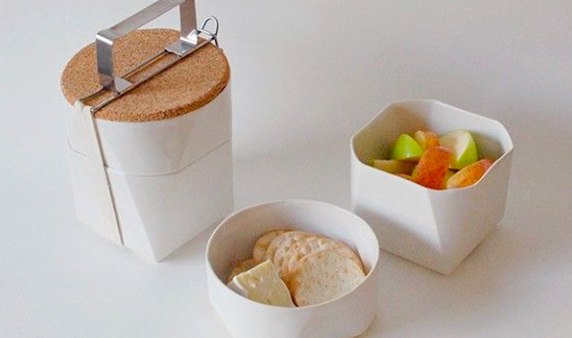
A ceramic is a material that is neither metallic nor biological. It could have a crystalline shape, a glassy form, or both crystalline and glassy forms.
Ceramics are known for their brittleness, chemical neutrality, and ability to be heat-formed or densified. This technology makes the fabrication of a highly diverse range of shapes and patterns possible.
Ceramic containers, much like non-toxic glass ones, are safe to put in the oven, the microwave, the dishwasher, and the freezer. Ceramics do not take on the smells or flavors of foods that are being prepared and are highly resistant to stains. Ceramic lunchboxes are better for the environment and more substantial than plastic or glass alternatives. When struck against a hard surface, such as the edge of a countertop, various components, including the handles, lids, and edges, have a high risk of chipping.
Despite its durability, the product has this trait. As a direct consequence of this, handling ceramic lunch boxes demands extreme caution.
Wood
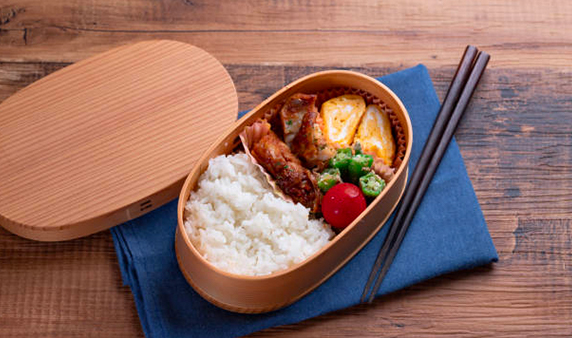
Wooden lunch boxes are a stylish and environmentally friendly way to store food. They are great for taking to work, picnics, or wherever a portable meal is required.
Wooden lunchboxes are often reusable and made from environmentally acceptable materials. As a result, they are a perfect substitute for disposable or plastic containers.
When choosing a wooden lunchbox, several elements should be addressed. Ensure the box is made of solid wood rather than particle board or other composites. Check for cracks and splinters and ensure that the joints are snug.
Find a lunchbox with a changeable lining. This will make cleaning easier and keep food from clinging to the sidewalls.
When not in use, keep lunchboxes in a dry and cool place. Best to Avoid putting it in direct sunlight or near a heat source.
Furthermore, wood bento lunch boxes have poor sealing, are not temperature resistant (they cannot be sanitized or heated at high degrees), and are not suitable for filling with oily, juicy, or easily contaminated meals.
What Is the Difference Between Stainless Steel and Other Lunch Boxes?
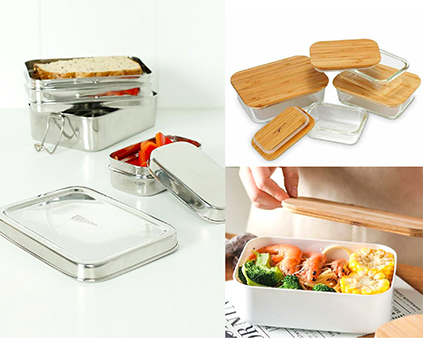
The stainless steel lunch box is the best alternative to replace the plastic or metal lunch box with something more appealing and environmentally responsible. Here are the main differences between this lunchbox and others and their relevance.
BPA-free Plastic vs Stainless Steel
Those concerned about their environmental impact may consider purchasing a lunchbox made of stainless steel. Stainless steel lunch boxes are designed to last significantly longer than lunch boxes made of other materials since they are more resilient. In most cases, plastic does not contain bisphenol A; however, the composition of plastic can change over time.
This could cause minimal amounts of the chemical bisphenol A (BPA) to seep into the food supply. The consumption of products containing BPA has been associated with several adverse health effects, such as sterility, obesity, cardiovascular disease, type 2 diabetes, and cancer. So you need to choose the best stainless bento box, rather than plastic lunch boxes.
Low-Cost Metal vs Stainless Steel
Some lunchboxes are made of metal or cheap plastic. While these methods are suitable for food preservation, they could be better for separating hot and cold meals. BPA (Bisphenol A) can leach into one’s food if the lunch box is not constructed of BPA-free materials.
Glass Lunch Box vs Stainless Steel
Glass lunch containers are wonderful. They’re also great for keeping food warm or cold, depending on the type purchased. Glass lunch boxes are heavier and more delicate than stainless steel ones, making transportation more challenging which makes it not the best tiffin box in a way.
What Is the Best Material for Lunch Box?
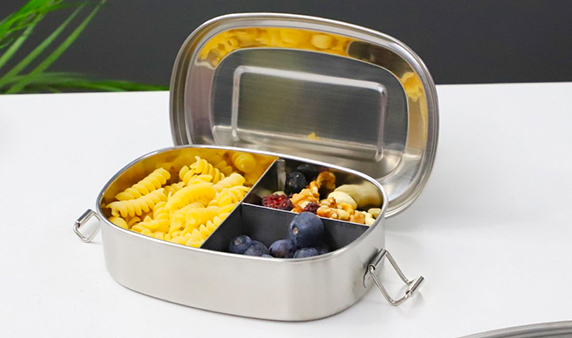
Stainless steel is a popular material for lunch boxes and can be purchased from a supplier of wholesale tiffin boxes. This is popular because stainless steel lunch boxes are durable and easy to clean. It also looks amazing and matches most styles. Stainless steel is the superior material for lunch boxes for several reasons, which are discussed below.
Eco-friendly
Stainless steel is desirable for various reasons, including its environmental friendliness. Because stainless steel is made from recycled materials, its manufacturing has a lower ecological effect than other materials.
Moreover, because stainless steel is sturdy and long-lasting, lunch boxes made from it do not need to be replaced for many years. This suggests that fewer resources are used overall, thus reducing the environmental impact. Finally, at the end of their useful life, stainless steel bento boxes may be recycled again, allowing them to be reused without affecting the environment.
Affordable
When one thinks of materials that are good value for the money, stainless steel is not the first one that springs to mind. But a stainless lunch box is also a cost-effective option if you need to export them from China steel tiffin box manufacturers. Nicety could provide a bulk price for your lunch boxes business.
Long-lasting
Unlike glass or ceramic, stainless steel tiffin boxes do not distort, shatter, or fracture. This is due to the extremely long-lasting nature of stainless steel and its easy maintenance, so it will last longer. Stainless steel is also corrosion and rust-resistant, so it will retain its original beauty for many years.
Plastic materials, on the other hand, disintegrate with each washing. As a result, rustproof steel is a low-maintenance food storage material. Stainless steel lunch box ensures years of use, saving money in the long run compared to aluminum, which pits quickly.
Can Keep Hot Food
Stainless steel food containers serve as hot cases when food is added. The container will retain and warm the food without causing any harm.
Conclusion
Many different materials may be used to build lunch boxes. Choosing the suitable material for one’s lunchbox is critical, depending on the sort of food packed. One should use a different material, such as stainless steel with compartments when packing sandwiches. Each lunchbox style has advantages, so choosing the one that best meets one’s requirements is critical.
Consider a plastic lunch box when considering buying a lunch container that is easy to clean. Plastic lunchboxes are often made of long-lasting materials that can withstand repeated use. The majority of plastic lunchboxes may be washed in the dishwasher.
If looking for a more environmentally friendly option, stainless steel or metal lunch boxes are excellent choices. It is entirely safe and non-toxic. As a result, most restaurants prefer to cook and store food with stainless steel kitchenware. Furthermore, stainless steel lunchboxes are easy to clean.
Moreover, if you are building a business in the stainless steel sector, forming a partnership with Nicety stainless steel food containers manufacturer is a viable option. They offer a wide range of products available for customization. This means that start-ups will have a much easier time getting off the ground with the help of the company’s professionals.
Utilizing a company’s experience with stainless steel containers is a win-win, you could save time, money, and energy from this cooperation.
Is making stainless steel tiffin boxes part of your long-term strategy? You need to cooperate with Nicely. Get in touch with us right away. Instead of using disposable plastic containers and bags for food, you may use Nicely stainless instead.

